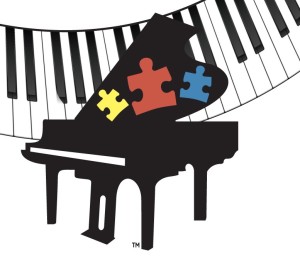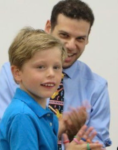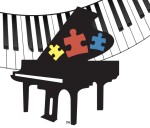Occupational Octaves: Adding that Occupational Part
 Hi there everyone. I’m Lee Stockner and I’m pleased to share my latest Occupational Octaves column with you. The bulk of my lessons have been taught alongside, and improved by, occupational therapists, who I see as some of the most important people in the world of special education. If there is a deficiency in any area, an occupational therapist (OT) is the exact person to be able to diagnose and analyze it. In this post, I want to talk about how to spot strengths and deficiencies in your special needs students—how we put the occupational into Occupational Octaves.
Hi there everyone. I’m Lee Stockner and I’m pleased to share my latest Occupational Octaves column with you. The bulk of my lessons have been taught alongside, and improved by, occupational therapists, who I see as some of the most important people in the world of special education. If there is a deficiency in any area, an occupational therapist (OT) is the exact person to be able to diagnose and analyze it. In this post, I want to talk about how to spot strengths and deficiencies in your special needs students—how we put the occupational into Occupational Octaves.
While the world of special needs music education is largely focused on how to adapt traditional music notation for special learners who are frequently unable to functionally comprehend traditional notation, Occupational Octaves Piano™ is focused on the human mind and using non-traditional notation to maximize opportunities for success in processing information. (See …As a Pianist with ADHD, and other past posts for information on that process as illustrated in my Piano Circle of Cognitive Gain)
To properly analyze strengths and deficiencies, we need to look at the occupational side of things—specifically developmental goals. The following list of developmental goals was provided to me by an OT colleague from Long Island, NY. Improving these developmental elements, as they apply to learning piano, should be a part of all special needs beginner lessons as they are hugely important to the long term viability of a player.
- Eye-hand coordination – the efficient teamwork of the eyes and hands, necessary for activities such as playing with toys, dressing, and writing.
- Bilateral coordination – the ability to use both hands together.
- Finger isolation – the ability to move one finger at a time. This is important for developing grasping skills, such as those needed to manipulate zippers and buttons or to hold a pencil.
- Shoulder stability – having adequate strength and muscle control in the shoulders so the hands can be used effectively in a variety of positions.
- Motor planning – the ability to conceptualize and carry out unfamiliar actions.
- Proprioception – the sensory system that relates to a person’s awareness of the position and movement of their body and of the force that they use in their movements. When a child works on striking a specific piano key with the right amount of force, proprioceptive awareness is improved.
- Auditory (listening) processing skills
- Auditory Attention – the ability to listen long enough to complete an activity
- Auditory Memory – the ability to take in auditory information, then process, store and recall that information. Auditory memory is important for developing speech and for learning.
- Auditory Discrimination – the ability to distinguish between sounds that are similar
- Auditory Figure-Ground – the ability to pay attention to particular sounds within a noisy background
- Ocular motor skills – the ability to control eye movements:
- Visual Fixation – the ability to maintain visual attention on a specific target.
- Visual Saccades – the ability to quickly and accurately move the eyes from one target to another. This allows a child to control where he aims his eyes. When reading, saccades allows the child’s eyes to move to the next word or line without losing his place in the text.
- Visual Tracking – the ability to move the eyes together smoothly, such as to follow a line of print without deviating to lines above or below.
- Visual Accommodation – the eyes’ ability to adjust to maintain focus on objects at various distances, such as copying from a model (for writing, block design, etc).
When applying each of the above developmental goals in piano lessons, there is a benefit outside those lessons. Strengthening deficiencies can help a student improve their daily lives beyond enjoying the music they play! Improvements in eye-hand coordination for someone recovering from a traumatic brain injury is priceless. Finger isolation for a student who can’t properly hold a pen will target many of the same muscles. Auditory processing skills, which require a certain degree of concentration, can be a challenge for people with ADHD, like myself. Ocular motor skills and visual tracking have constant and countless areas of use from brushing teeth to driving a car.
I’d encourage everyone to research any the above developmental terms you haven’t seen before and see if they resonate with your current traditional or special needs piano lessons. You’re probably working with your students through these developments already or maybe you’re realizing that you have strength in these areas because of all of your own piano experience!
If you choose to use traditional music notation in your special needs piano lesson, try to confirm beyond the shadow of a doubt that a student is able to get that information with ease and independence for each note encountered. To test this, open up five different pages that are appropriate for your student’s skill level which they’ve never seen before and on each page point out a handful of notes.
Next, sit back and see whether or not the student can easily, quickly and independently read the notes, fingers and beats on all five selections. If you’re sure the student can do so, they should ABSOLUTELY use traditional notation and I’d also encourage you to review the terms my OT friend supplied and think about them in both your traditional and special needs lessons.
If you and your student are stuck trying to translate the traditional notation with ease and clarity, then you’re not able to move past the initial eyes/brain portion of reading/playing music. In this case I’d strongly suggest giving Occupational Octaves Piano™ a try. As a special needs user friendly program, almost every student who can match colors and letters can look at any instruction in the book and know exactly which notes to play, fingers to use and beats to hold with the necessary ease and clarity.
Regardless of what language you choose, let’s all dig deeper into how human beings truly improve from playing music! If you have any questions for an OT who is also Occupational Octaves Piano™ certified, feel free to visit Aya Baghdadi at The Special Pianist.



There is no Special Pianist blog. There is TheSpecialPianist.com, which is Aya’s website for her local Occupational Octaves Piano based company in Amman, Jordan. I am the only blog writer right now in the OOP family and I am proud to have the Occupational Octaves Blog featured right here at Piano Addict. Please feel free to read the previous ones and reach out to me directly with any questions – Lee@OccupationalOctavesPiano.com.
Books 1-3 are available at Amazon.com, DiffLearn.com, AllMusicInc.com, or through me directly via e-mail.
Lee Stockner do you have the url for the Special Pianist Blog?
Definitely looking into Occupational Octaves. Could I get the link to the Special Pianist Blog? Doesn’t seem to be there, and can’t find it in google.
Thanks!